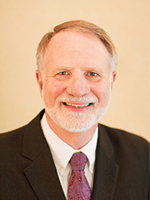For Dr. Paul E. Fixen of the International Plant Nutrition Institute (IPNI), the 4Rs are more than a good fertilizer practice, they are a state of mind. The senior vice president oversees efforts in the Americas, Australia and New Zealand, and is also director of IPNI’s global research efforts.
Dr. Paul E. Fixen is a huge proponent of the 4R system. When it comes to making a decision about one factor of nutrient management, whether it be source, rate, time or place, they are all connected. For Dr. Fixen, the 4Rs represent a way of thinking.

Dr. Paul E. Fixen, IPNI
“The 4Rs aren’t just important for organizations that work at a state, national or international level,” he says. “It’s critical that our farmers can communicate to their friends in their community exactly what they’re about and what they’re trying to do. Utilizing the 4Rs is a wonderful tool to facilitate this effort. They have a proven track record of being an effective communication tool.”
According to Fixen, when growers truly understand the 4R framework, it helps them recognize that the decisions made about one aspect of the nutrient management program has ramifications for other aspects. This framework reminds growers of practices they likely already know and have known for a long time that are based on critical farm management: planning ahead, record-keeping and everything that comes with a successful farming business. Understanding these good management practices and how they are all connected lays the foundation for the 4Rs.
Some of these good management practices go beyond universal best practices and should relate to the individual. A grower’s primary goals should be omnipresent while managing to the 4Rs.
Profitability significantly drives application rate decisions. If the rate is too high, growers could lose on the cost side. If the rate is too low, growers could lose on the yield side. Growers can significantly miss profit goals if the rate is off. However, Fixen states that when it comes to meeting multiple goals, not just financial goals, but in making nutrient management and fertilizer decisions, thinking needs to go beyond these basic short-term numbers and even beyond the immediate economic impact.
“What we see out of research that focuses on reaching multiple goals while following the 4Rs is that if we control the balance between what is applied and what is needed by a specific crop, we can get a long way toward minimizing nutrient losses and optimizing efficiency of water use, as well as other nutrients, and really make the whole system more efficient,” Fixen says. “We aim to have just enough nutrients in the system. That’s how you accomplish multiple objectives, is to get it just right. This means there is little room for error in the other R’s.”
All four R’s need to be factors in planning, or the whole process falls apart. If one R is wrong, it is likely they are all wrong.
To ensure all R’s are right, Fixen recommends assessing the nutrient need with a soil test. He suggests making sure you test at least every four years. Based on how the results of the soil test come out, the need of the soil should be connected to a target or optimum level of phosphorus (P) and potassium (K). Each target should be customized based on the grower’s soils, operation, cropping system and crop rotation, all while keeping in mind university guidelines.

Once the general management plan is put together, each nutrient need can be separated. For P and K, attention to the soil supply level is important. According to Fixen, the majority of P and K for the crop is going to come from what is already in the soil, versus the fertilizer that is applied in the current year (which is usually the opposite of nitrogen [N]). The soil needs to be prepared to meet the demand of the crop. In order to make sure the soil can meet the demand, an assessment of supply and demand needs to be made. If the soil test reveals that nutrients are at an appropriate level, then replacing anticipated nutrient removal at harvest becomes the objective. If, after soil assessment, the measured level is above the target level of nutrients needed, then less P and K needs to be applied for the year than will be removed. On the other hand, if the soil level is below the target, then more P and K will need to be applied than is removed in order to meet crop demand.
“When it comes to nitrogen, it’s a bit more complicated – or a lot more complicated,” explains Fixen. “Because nitrogen can be so intricate, there’s no one best approach to defining the right rate. It’s more important to match end supply with crop demand for the current season, because unlike for phosphorus and potassium, most soils don’t store leftover nitrogen very well.”
The challenge, when it comes to N, is trying to estimate what the need is going to be in the fields for each year. In some states, research shows little relationship between yield potential of the field and optimal end rates. In other states, a stronger relationship occurs between optimum rate and yield potential. Setting realistic yield goals is a part of defining N demand and yield potential.
Because there is so much variation across regions in the nitrogen rate recommendations, Fixen says it’s important to use local university extension recommendations as at least the starting point. Universities are calibrated for area soils and climate, so they will be the best resource for N-rate recommendations. However, there are some universal factors to consider when assessing N rate, regardless of region or state, Fixen cautions.
“It’s sometimes easy to forget to credit the nitrogen that is in some phosphate fertilizers,” he says. “There can also be nitrate carryover from the year before, especially in dry areas. Both of these are important factors that need to be figured into the whole management system.”
One option for managing this complicated nutrient is to adjust the rate based on how the year progresses. An early- to mid-season assessment involving tissue tests, sensors, imagery or decision support tools can help guide whether N should be applied in-season. Determining rate is a difficult decision to make, and on-farm data can be extremely helpful for guiding management decisions.
“It’s important to find your own solution that works best with your soils, crops, equipment and the environment you’re in,” Dr. Fixen says. “It’s not just about source, rate, time and place of fertilizer. It’s about having those practices in place in a system that has agronomic and conservation practices also refined and in place. Following the 4Rs is how we meet the goals – our own goals and the goals that society says that they expect us to pursue in food production systems today.”